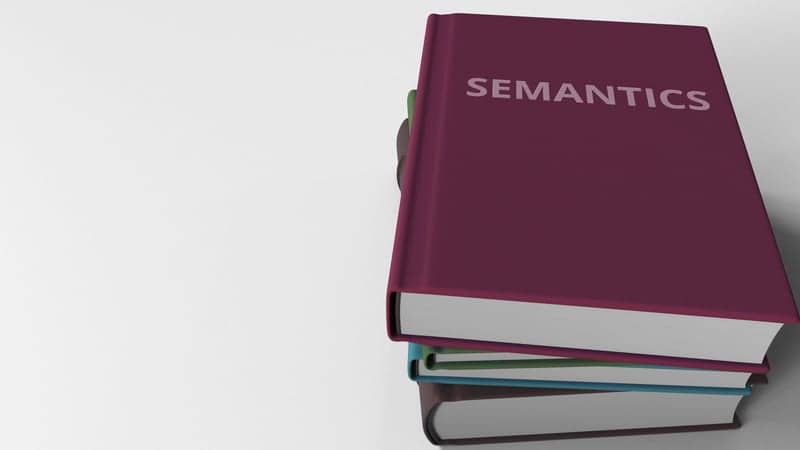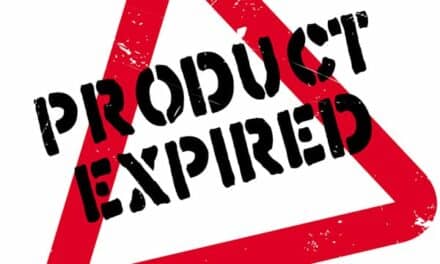By Binseng Wang, ScD, CCE
What is medical equipment? At first glance, you would think that this would be an easy question to answer, but the query of what makes a piece of equipment “medical” is one that is debated among clinical engineering/HTM professionals every few years. Unfortunately, they’ve never come to a consensus.
Recently, it has resurfaced even more often, apparently due to some overzealous surveyors trying to strictly enforce the following rule contained in the Centers for Medicare & Medicaid Services’ (CMS’) S&C 14-07 memorandum (CMS, 2013):“All hospital facility and medical equipment, regardless of whether it is leased or owned, and regardless of whether it is maintained according to manufacturer recommendations or is in an AEM program, is expected to be listed in an inventory, which includes a record of maintenance activities.”
Behind the Confusion
The reason confusion persists is because no authority having jurisdiction (AHJ) has provided a definition for medical equipment thus far. The U.S. FDA has a long and complex definition of medical devices because the Food, Drug & Cosmetic Act mandates it to cover devices ranging from tongue depressors to proton beam therapy systems. However, since there is no need for the FDA to distinguish equipment from devices, it is likely that the agency will continue to define everything as a “device” if it “does not achieve its primary intended purposes through chemical action within or on the body of man or other animals and which is not dependent upon being metabolized for the achievement of its primary intended purposes.”
Intuitively, all medical equipment are medical devices—but not all devices should be considered equipment. For example, implants and single-use devices are clearly not equipment that needs to be inventoried or repaired occasionally, as they leave the institution with the patient or are discarded after use. However, there are many “borderline” devices—such as surgical instruments, flowmeters, hand-held pulse oximeters, stethoscopes, sphygmomanometers, rigid endoscopes, etc.—that may last only one to three years and do not need routine, scheduled maintenance; instead, they only require occasional repairs or replacement.
Furthermore, many of these borderline devices are not individually serialized, making their inventory and service documentation impractical. So, the key to defining medical equipment lies in deciding what to do with borderline devices.
Establishing a Definition
CMS is another AHJ since it is the gatekeeper of Medicare and Medicaid reimbursements. Since CMS enforces the Condition of Participation (CoP), which states that “facilities, supplies, and equipment must be maintained to ensure an acceptable level of safety and quality” (42 CFR 482.41(c)(2)), one would expect a clear definition from CMS. Unfortunately, the CMS S&C 14-07 memorandum (CMS, 2013) only offers some examples in the following statement: “… medical equipment, which are devices intended to be used for diagnostic, therapeutic, or monitoring care provided to a patient by the hospital (e.g., IV infusion equipment, ventilators, laboratory equipment, surgical devices, etc.).”
The third critical AHJ is The Joint Commission (TJC)—the largest accreditation organization deemed by CMS. TJC has adopted the FDA definition of “medical devices” and offers the following definition for medical equipment: “Fixed and portable equipment used for the diagnosis, treatment, monitoring, and direct care of individuals.” Unfortunately, this definition is not helpful either, because it requires defining equipment before determining if the equipment is also medical.
Most dictionaries, including Merriam Webster, define equipment as something like, “all the fixed assets other than land and buildings of a business enterprise.” Moreover, finance professionals classify “fixed assets” as “a company’s tangible, noncurrent assets that are used in its business operations.” And the word “fixed” indicates that these assets will not be consumed or sold in the current accounting year,” according to AccountingCoach. In other words, the critical part of the asset notion is that its cost cannot be deducted immediately from the company’s revenue, but must be depreciated during its expected useful life.
In addition to durability, fixed assets must exceed a certain minimum value to be worthwhile to be inventoried and depreciated on financial ledgers; otherwise, the required labor could be costlier than the financial gain. Recognizing this fact, the IRS allows businesses to use either $2,500 or $5,000 for capitalized fixed asset expenditures. Furthermore, for their own accounting purposes, the IRS only defines a capitalized asset as something with an estimated useful life of two or more years that exceeds a certain threshold— for most equipment, it’s $50,000. The exception, however, is “listed equipment,” which includes computers and vehicles.
Proposing a New Standard
The considerations above illustrate that not all medical devices should be considered equipment. Specifically, implants, single-use devices, and single-patient-use devices cannot be considered “fixed assets” because they are consumed in the care process. Additionally, most borderline devices should also be excluded, due to their low costs and/or short useful life. Therefore, one possible definition of “medical equipment” that seems consistent with financial rules would be: Medical equipment is defined as a medical device listed with the FDA that is: (i) durable and reusable for multiple patients for at least three years, (ii) serialized (i.e., assigned a serial number) by its manufacturer, and (iii) has unit acquisition cost above $2,500.
Obviously, I’m under no illusion that AHJs will promptly accept this proposed definition. However, I hope that if most of my colleagues accept it, they may eventually convince one or more of the AHJs to adopt it as a consensual definition, eliminating the confusion that has been around for quite some time.
In the meantime, one can use the following “escape clause” that CMS gave in its S&C 14-07 memorandum to address the inventory challenge created by those overzealous surveyors: “For low cost/low risk equipment, such as housekeeping cleaning equipment, it is acceptable for the inventory to indicate under one item the number of such pieces of equipment in the hospital, e.g., ‘15 vacuum cleaners for cleaning patient rooms and common areas.’”
In other words, the borderline devices can be grouped into a few categories, where they’re accounted for according to the total number of items, instead of being individually tracked. Further, whatever department is using the device can manage the category inventory, rather than cluttering the true equipment inventory. In addition, most of these devices can be placed into the AEM-corrective maintenance-only (aka: “run to failure”) strategy, which means scheduled maintenance completion doesn’t have to be tracked.
Incidentally, years ago, I offered a definition for “critical’’—or “high-risk,” as TJC prefers—equipment, which can be found here. That definition is consistent with the equipment definition offered above and can be used to satisfy the CMS S&C 14-07 memorandum in terms of inventory management.
Binseng Wang, ScD, CCE, is a principal consultant with health technology consulting firm BSI. Questions and comments can be directed to chief editor Keri Forsythe-Stephens at [email protected].
References:
- https://www.cms.gov/Medicare/Provider-Enrollment-and-Certification/SurveyCertificationGenInfo/Policy-and-Memos-to-States-and-Regions-Items/Survey-and-Cert-Letter-14-07.html
- https://www.fda.gov/medicaldevices/deviceregulationandguidance/overview/classifyyourdevice/ucm051512.htm
- Glossary, in Comprehensive Accreditation Manual for Hospitals, 2018. Available at https://www.merriam-webster.com/dictionary/equipment
- https://www.accountingcoach.com/blog/what-are-fixed-assets
- https://www.irs.gov/businesses/small-businesses-self-employed/tangible-property-final-regulations
- https://www.irs.gov/irm/part1/irm_01-035-006#idm140511626097488






This is an important commentary. You’d think we would have a solid working definition for medical devices and medical equipment. I have no objection to HTM programs covering a wide variety of equipment — that’s a business decision — but when it comes to regulatory and standards compliance, we need clarity. This is another opportunity for the HTM community to develop a consensus and work with the regulators to implement it.
I get the significance of the business issues represented in the article, but it continues to seem to me that the field is always in reactive mode to regulatory requirements that are reactive to industry-driven changes. When it comes to safety, this seems backwards to me. I suggest that HTM reflect on that.
And I already know the comeback: “When you’re up to your ears in alligators, it’s difficult to attend to draining the swamp”. I’ll still suggest HTM leadership look at some of the safety engineering models being used for more complex systems.
A set of such models that have earned a lot of respect across many domains are laid out in Nancy Leveson’s “Engineering a Safer World” , a PDF for which can be found at https://mitpress.mit.edu/books/engineering-safer-world .
If you read nothing else from the book, at least read the first chapter, “Why Do we Need Something Different?” It’s only three pages long. Humor me. Read them.
If you then want to go further, jump right into chapter two, “Questioning the Foundation of Traditional Safety Engineering”. Forewarned: It does a pretty good job of challenging the adequacy of the Domino and Swiss Cheese models to model accidents in complex systems. It’s a much longer chapter, but a quick summary can be found in Table 2.1 on page 57, “The basis for a new foundation for safety engineering”.
Read whatever you want after that …
The models that have derived from Leveson’s work can be rather complex, and applying them to systems under the control of HTM may not always, or even generally, worth the expense. But other models exist, e.g., assurance cases, lightweight versions of which can be developed (and which Leveson has been known to criticize; this remains a developing field).
Is there a role and/or place within HTM to be aware of the palette of options for risk management? Can HTM respond with critiques grounded in formal analysis to arguably inconsistent and/or incoherent challenges from regulators like the ones laid out in this article? Or is the field destined to play a never ending game of regulatory Whack-A-Mole governed by 20th century perspectives on the nature of safe systems?
Amazing isn’t it. 45 years later and we still can’t define what Medical Equipment we as HTM technicians and managers are responsible for. It seemed pretty ludicrous when I attended my first SMDA briefing that they were worried about tongue depressors and cotton swabs to high-end medical devices. Of course, it shouldn’t be surprising since FDA and CMS are involved.
There has long been a recognized difference between what is inventoried for equipment management purposes and what is inventoried for financial management purposes. Cost is not helpful as a criteria for safety concerns. Things that cost less than $2500 can still hurt you.